Medical Tourism Blog
Filling Threads in Korea | Best Clinics, Costs, Procedure Types & More
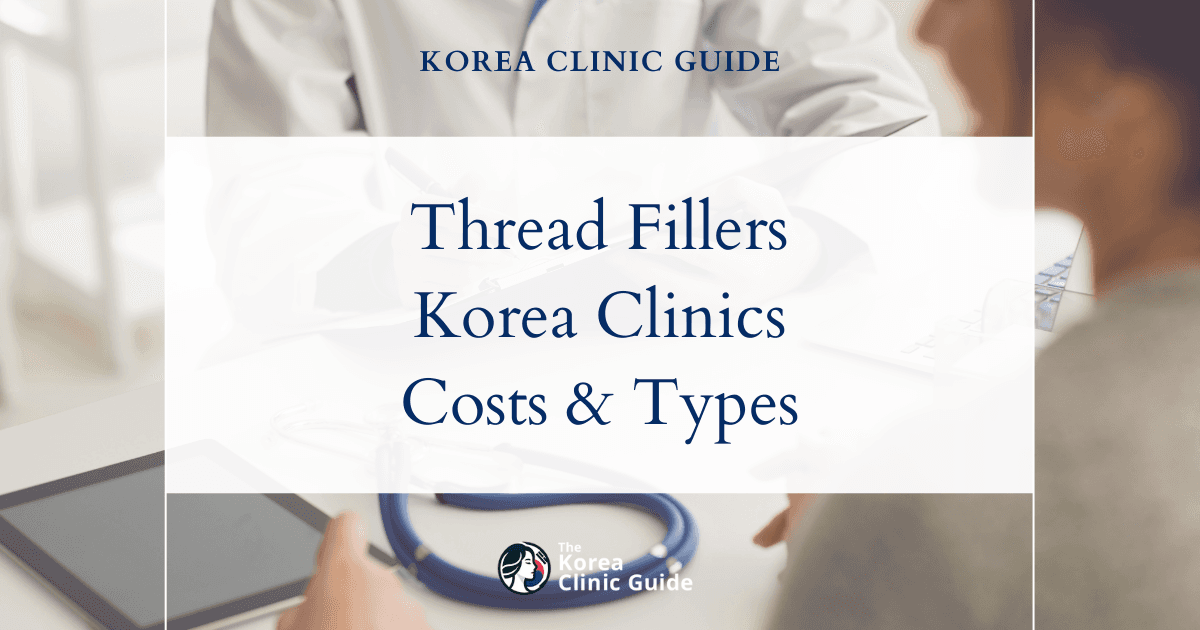
Table of contents
- What Is Filling Threads?
- Best Clinics in Korea for Filling Threads
- Getting Filling Threads in Korea
- Cost of Filling Threads in Korea
- Alternatives to Filling Threads
- Conclusion
Considering treatment in Korea? Everything you need to know e.g. — how to avoid scams, visas, interpreters, recovery tips — in our Medical Tourism Master Guide. Plan with confidence in minutes, not weeks!
Considering non-surgical facial rejuvenation in Asia’s beauty capital? This article introduces filling threads—collagen‑stimulating sutures such as PDO, PLLA, or PCL—and explains how they lift and refine facial contours, their benefits, limitations, and safety profile. We then walk you through getting filling threads in Korea: why the country is renowned for this procedure, how to evaluate clinics and practitioners, what to expect at consultation and on treatment day, and typical recovery and aftercare. You’ll learn who filling threads are for (and who should avoid them), including candidacy, skin concerns best addressed by threads, and common contraindications. We also break down the cost of filling threads in Korea, what drives price differences, and how to budget wisely. Finally, we compare key alternatives—from dermal fillers to energy-based tightening and surgical options—so you can weigh threads against other pathways to smoother, firmer skin.
What Is Filling Threads?
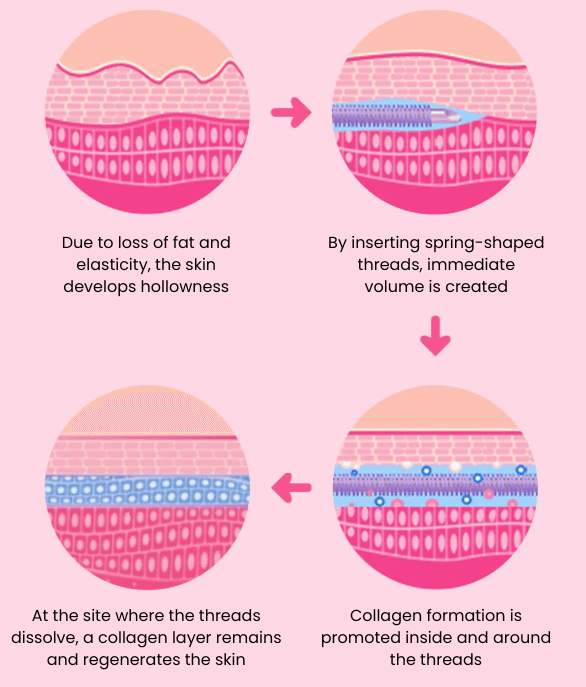
Filling threads are a minimally invasive aesthetic procedure that uses absorbable sutures placed beneath the skin to restore volume, smooth wrinkles, and improve skin quality by stimulating collagen production. Unlike traditional “thread lifts,” which rely primarily on barbed threads to lift and reposition sagging tissue, filling threads focus on volumization and dermal reinforcement. They are widely performed in Korea by dermatologists and plastic surgeons and are part of a broader family of thread-embedding techniques popular in K-beauty practices.
How filling threads work
- Mechanical support: The thread itself provides an immediate, subtle scaffold. Twisted or “screw” designs offer a small, instant “space-occupying” effect, softening fine lines and shallow depressions.
- Biostimulation: As the thread material gradually dissolves, it triggers controlled tissue remodeling. Fibroblasts produce new collagen (types I and III), elastin, and hyaluronic acid; micro-angiogenesis improves local circulation. This yields thicker, firmer skin and longer-lasting soft-tissue “filling” than the thread’s physical presence alone.
Thread materials commonly used
- PDO (polydioxanone): Dissolves over about 4–8 months; collagen-stimulated effects can persist 9–18 months depending on skin quality, technique, and aftercare.
- PLLA (poly-L-lactic acid): Slower resorption (approximately 12–24 months) with a stronger biostimulatory profile; effects may persist beyond the resorption period.
- PCL (polycaprolactone): Also slow-resorbing (around 18–24 months), with sustained collagen stimulation and a softer, more elastic feel.
Thread designs and why they matter
- Smooth (mono) threads: Fine, straight PDO/PLLA/PCL threads placed in multiples to form a “mesh” that densifies the dermis and improves texture, fine lines, and crepiness.
- Screw/twisted threads: A smooth thread spiraled around a needle or core thread; offers immediate, subtle volumizing for shallow folds and contour refinements.
- Cog/barbed threads: Primarily used to lift; in a “filling” context, they can create soft pillars or re-suspend tissue while also stimulating collagen, often combined with mono/screw threads for comprehensive results.
Typical treatment goals
- Softening static lines (e.g., perioral fine lines, cheek accordion lines) and early nasolabial or marionette folds.
- Improving dermal thickness and elasticity in areas of crepey or lax skin (cheeks, lower face, neck).
- Refining contour in regions needing subtle volumization (pre-jowl sulcus, jawline transitions, temples with mild hollowness).
- Textural improvement of certain atrophic scars and the décolletage, and selective body areas like the knees or abdomen with fine laxity.
Who benefits most
- Patients with mild to moderate laxity or early volume deflation who prefer a gradual, natural-looking improvement.
- Those seeking collagen stimulation without the bulk of traditional fillers, or as a complement to fillers and energy-based devices.
- A wide range of skin types; thin skin can respond well to mesh techniques, though thread visibility must be considered.
How the procedure is performed
- Assessment and planning: The clinician evaluates skin thickness, vector directions, fold depth, and areas needing densification versus lift. Photos and skin quality scoring help set baselines and expectations.
- Anesthesia and antisepsis: Topical and/or local anesthesia is used. The skin is cleansed thoroughly to minimize infection risk.
- Placement technique: Using fine needles or blunt cannulas, the provider inserts multiple threads at the appropriate depth (generally intradermal to immediate subdermal for mono/screw designs; deeper planes for lifting cogs if combined). Patterns include linear threading, fanning, or lattice/mesh to evenly distribute support and stimulation.
- Finishing: Thread ends are trimmed flush to the skin. Gentle molding may be performed. The number of threads varies widely by area and indication; a “filling mesh” may use dozens of mono threads per region.
What to expect
- Procedure time: Typically 20–60 minutes depending on areas treated and thread count.
- Onset and evolution: A small immediate improvement can be visible from mechanical support and mild edema. The more meaningful change appears gradually over 6–12 weeks as collagen builds, with continued refinement for several months.
- Longevity: Results often last 9–18 months with PDO-based meshes, and potentially longer with PLLA or PCL systems. Maintenance sessions are common.
Aftercare (general principles)
- Avoid vigorous facial massage, extreme expressions, or mouth-opening dental work for 1–2 weeks if lifting threads are also used.
- Sleep on the back with the head elevated the first few nights to reduce swelling and avoid pressure on freshly placed threads.
- Minimize alcohol, sauna/steam, and intense workouts for several days; follow the clinic’s cleansing and skincare instructions.
- Expect mild swelling or bruising; these usually resolve within days to two weeks.
Safety and potential side effects
- Common, usually self-limited: Bruising, swelling, soreness, transient dimpling or puckering, and palpable thread ends during early healing.
- Less common: Asymmetry, surface irregularities, thread visibility in very thin skin, minor thread migration, or delayed inflammatory reactions.
- Rare but important: Infection, thread extrusion, nodules/granulomas, or nerve/vascular injury (risk reduced with proper technique and use of cannulas). Meticulous antisepsis and experienced operators greatly mitigate these risks.
How filling threads compare with dermal fillers and surgical options
- Versus hyaluronic acid or other fillers: Fillers add immediate, targeted volume and can be ideal for deeper deficits (e.g., cheeks or chin). Filling threads provide gradual, diffuse collagen-based thickening and subtle volumization with a lower risk of intravascular events, though they do not replace the shaping power of fillers in all cases.
- Versus thread lifts: Filling thread protocols prioritize mesh-like reinforcement and textural improvement; classic thread lifts prioritize vector-based elevation. Many Korean protocols blend both for synergistic tightening and volumization.
- Versus surgery: Filling threads offer modest, natural improvements with minimal downtime, suitable for early changes. They do not replicate the magnitude or durability of a surgical lift.
The Korean context
- Korea popularized refined thread-embedding techniques, standardized vector maps, and high-thread-count meshes for dermal densification.
- Clinics frequently combine filling threads with skin boosters, laser/energy devices, or small-volume fillers to customize outcomes.
- Training and device quality vary; reputable clinics use KFDA-cleared materials and follow strict aseptic protocols.
Best Clinics in Korea for Filling Threads
Listed below are the best clinics in Korea for filling threads:
| Clinic Name | Key Features | Special Techniques |
|---|---|---|
| PangPang Clinic | Dedicated exclusively to thread lifting, expertise in filling threads for precise, natural-looking volume restoration, world’s first Thread Lifting Research Institute, medical team regularly invited to international beauty conferences (leadership in technique and safety), research- and data-driven care with strict material standards, fully personalized planning at the PangPang Thread Lifting Consultation Center, 31 specialized functional threads with tailored combinations, meticulous preoperative design, experienced revision capabilities, comprehensive, patient-centered approach | Filling threads and advanced thread procedures that lift and support collagen remodeling, volume threads for under-eyes, cheeks, and tear troughs, tailored thread combinations to optimize lift, contour, and soft-tissue support, revision of prior thread procedures |
| B.V Clinic | Located at Sinnonhyeon Station, advanced thread lifting and skin tightening with a focus on Filling Threads, precise non-surgical lifting targeting the SMAS to firm sagging skin, refine contours, and stimulate collagen, professionalism and personalized care, integration of Shurink (HIFU), Potenza, and Thor lifting, comprehensive aftercare and all-in-one wellness program, tailored for natural-looking, lasting results | 3D Thread Lifting to sculpt contours at the SMAS, Full Face Lifting to restore volume and balance while smoothing forehead wrinkles, enhancing nasolabial folds, and correcting asymmetry with immediate lift, Non-Surgical Forehead Wrinkle Restoration, combination treatments with Shurink (HIFU), Potenza, and Thor lifting technologies |
PangPang Clinic
PangPang Clinic in Seoul’s Gangnam district is a medical institution dedicated exclusively to thread lifting, with particular expertise in filling threads for precise, natural-looking volume restoration. The clinic has established the world’s first Thread Lifting Research Institute and its medical team is regularly invited to present at international beauty conferences, underscoring its leadership in technique and safety. Grounded in research and extensive clinical data, PangPang continually refines high-satisfaction, advanced thread procedures that not only lift but also support collagen remodeling, and the clinic adheres to strict material standards throughout care.
At the PangPang Thread Lifting Consultation Center, treatment planning is fully personalized to each patient’s anatomy and goals. Drawing from a portfolio of 31 specialized, functional threads—including volume threads designed for areas such as the under-eyes, cheeks, and tear troughs—the team tailors combinations to optimize lift, contour, and soft-tissue support. With meticulous preoperative design and experienced revision capabilities for prior thread procedures, PangPang Clinic delivers a comprehensive, patient-centered approach to filling threads and thread lifting.
You can check out their website here: PangPang Clinic Website
B.V Clinic
B.V Clinic, located at Sinnonhyeon Station, is dedicated to rejuvenating and enhancing natural beauty through advanced thread lifting and skin tightening techniques. With a focus on Filling Threads, the clinic delivers precise, non-surgical lifting that targets the SMAS layer to firm sagging skin, refine facial contours, and stimulate collagen for sustained, natural-looking improvement. Professionalism and personalized care are at the core of every treatment plan, helping patients achieve satisfying, balanced results.
The clinic’s thread portfolio includes 3D Thread Lifting to sculpt contours at the SMAS, Full Face Lifting to restore volume and balance while smoothing forehead wrinkles, enhancing nasolabial folds, and correcting asymmetry with immediate lift, and Non-Surgical Forehead Wrinkle Restoration to address upper-face aging without visible scars or anesthesia. To optimize outcomes, B.V Clinic can integrate Shurink (HIFU), Potenza, and Thor lifting technologies, complementing volume-focused interventions and supporting recovery with comprehensive aftercare and an all-in-one wellness program—all tailored to your goals for results that look natural and last.
You can check out their website here: B.V Clinic Website
Getting Filling Threads in Korea
Filling threads—often called thread lifts, PDO threads, or “thread filler” in clinic marketing—are minimally invasive treatments that place biocompatible, dissolvable threads under the skin to lift, contour, and/or add subtle volume while stimulating collagen. South Korea is a global hub for this procedure thanks to high procedural volume, advanced device manufacturing, and experienced dermatology and plastic surgery specialists.
What “filling threads” means in Korea
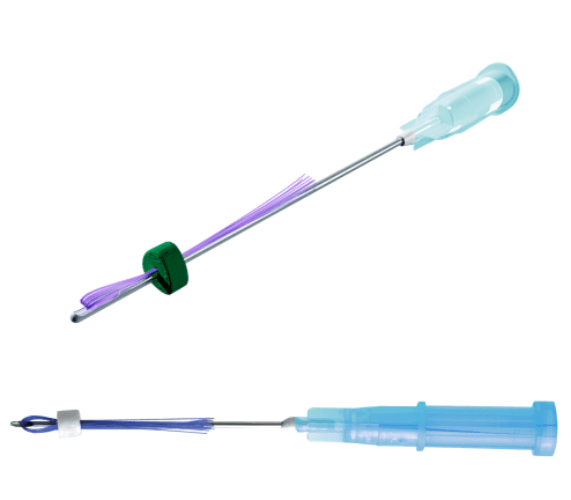
Korean clinics typically distinguish between:
- Lifting threads: Barbed or molded “cog” threads placed along vectors to elevate tissues (jawline, midface).
- Filling/volumizing threads: Mono, screw, or tornado threads placed in multiples to add subtle volume (e.g., nasolabial folds, marionette lines) and improve skin quality.
- Skin-quality threads: Fine mono threads used in a mesh pattern to stimulate collagen for texture, pore appearance, and fine lines.
Common thread materials:
- PDO (polydioxanone): Most widely used; dissolves in ~6–9 months; collagen effects can persist 9–18 months.
- PLLA (poly-L-lactic acid): Slower to resorb; stronger collagen stimulation; potential longevity 12–24 months.
- PCL (polycaprolactone): Longest-lasting synthetic among the three; softer feel; effects up to 18–24 months.
Who is a good candidate
- Mild to moderate skin laxity (early jowling, mild midface descent).
- Static lines or shallow volume deficits where subtle “fill” plus collagen stimulation is desired.
- Patients seeking definition (jawline, cheek) with minimal downtime.
- Non-smokers with good skin quality and realistic expectations.
Situations where threads may be suboptimal:
- Heavy tissue descent or advanced laxity (surgical lift may be more effective).
- Significant volume loss requiring bulk augmentation (hyaluronic acid fillers or fat grafting may be preferred).
- Very thin skin where thread visibility or rippling risk is higher.
Benefits emphasized by Korean clinics
- Minimally invasive with small entry points.
- Short procedure time and quick return to daily activities.
- Natural-looking refinement aligned with “K-beauty” aesthetics (subtle V-line, contouring, skin texture).
- Collagen remodeling that can improve skin quality over months.
How the procedure is performed (patient perspective)

- Consultation and mapping: A board-certified dermatologist or plastic surgeon assesses facial anatomy, skin quality, and goals; photos are taken; vectors and treatment zones are marked.
- Antisepsis and anesthesia: Skin is cleansed thoroughly; local anesthesia and, when needed, nerve blocks or light sedation are used for comfort.
- Thread placement:
- Lifting threads (cog/molded) are inserted through small entry points and guided along a subdermal plane, then gently adjusted to elevate tissues.
- Filling/mono/screw threads are placed in higher numbers in a crisscross or targeted pattern to thicken the dermis, soften folds, and enhance texture.
- Fine-tuning: The practitioner sculpts the result by adjusting tension; ends are trimmed; small dressings may be applied.
- Duration: 30–90 minutes depending on the number and type of threads.
Anesthesia and comfort
- Most cases use local anesthesia; larger lifts may add oral sedation.
- You can expect pressure or tugging sensations, especially with lifting threads; discomfort is typically mild to moderate and brief.
Recovery and aftercare
Typical timeline:
- Day 0–3: Swelling, tenderness, mild bruising; a “pulled” feeling with lifting threads.
- Day 4–7: Most swelling subsides; makeup can usually be worn after 24–48 hours if entry points have closed.
- Weeks 2–6: Collagen stimulation ramps up; skin feels firmer; dimpling (if present) often smooths out.
- Months 3–6: Peak collagen remodeling and most refined results.
Common aftercare guidelines used in Korea:
- Sleep on your back with head elevated for a few nights.
- Avoid exaggerated chewing, yawning, or facial massages for 1–2 weeks.
- Postpone dental procedures and wide mouth opening for 2–3 weeks after facial threads.
- Avoid saunas, hot yoga, and strenuous exercise for ~1 week.
- Use cold compresses in the first 24–48 hours and gentle skincare; your clinic may provide topical antibiotics for entry sites.
Expected results and longevity
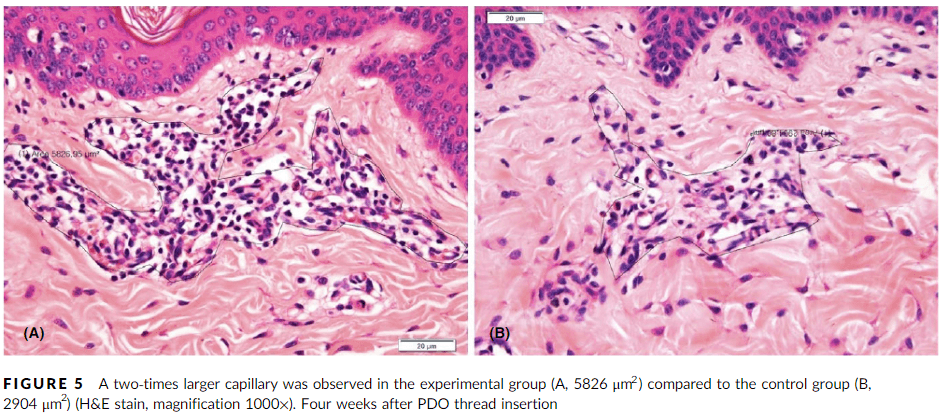
- Immediate improvement from mechanical lift or placement, followed by progressive enhancement as collagen forms.
- Longevity varies by material, thread type, anatomy, and lifestyle:
- PDO: visible effects ~6–12 months for lift; collagen benefits up to 12–18 months.
- PLLA/PCL: potentially 12–24 months.
- Maintenance: Many Korean patients repeat mono/filling threads annually and lifting threads every 12–18 months to maintain results.
Risks and potential complications
Most are mild and temporary:
- Swelling, bruising, soreness, and palpable thread ends.
- Skin dimpling or puckering (often improves with time or gentle clinic management).
- Asymmetry or contour irregularity.
Less common but important:
- Infection or biofilm formation.
- Thread exposure or migration.
- Persistent pain, nerve irritation, or vascular compromise (rare).
- Granuloma or prolonged inflammation, more often with stronger biostimulatory materials.
Risk mitigation in Korean practice:
- Strict aseptic technique; single-use cannulas/needles.
- Ultrasound guidance in select cases and meticulous vector planning.
- Early management protocols: massage techniques, enzymatic treatments, thread adjustment/removal if needed, and antibiotics for suspected infection.
Contraindications and cautions
- Pregnancy or breastfeeding.
- Active skin infection or inflammatory dermatosis in the treatment area.
- Bleeding disorders, uncontrolled diabetes, or significant immunosuppression.
- Known sensitivity to suture materials.
- Recent isotretinoin use may warrant delay, depending on clinic policy.
- Patients on anticoagulants or with keloid tendency require individualized planning.
How Korea tailors thread selection
- Material and design are matched to the goal:
- Jawline/jowl lift: stronger cog or molded threads (PDO, PLLA, or PCL).
- Nasolabial/marionette softening: screw or mono “filling” threads placed in multiple strands.
- Skin quality: high-count mono threads in a mesh pattern for texture and pore appearance.
- Combination approaches are common, often paired with HIFU (e.g., Shurink), RF microneedling, neuromodulators, or small-volume HA filler for balanced outcomes.
Cost overview in Korea
Prices vary by clinic reputation, thread brand, number of threads, and material. Typical ballparks in Seoul:
- Filling/mono thread packages (e.g., 50–100 threads): roughly 300,000–1,000,000 KRW.
- Partial facial lifts with cog/molded threads: roughly 600,000–3,000,000 KRW or more. Notes:
- Cosmetic procedures are not covered by national insurance.
- Quotes may be presented pre- or post-VAT (10%); ask for the final price.
- Packages for combined treatments are common and can reduce per-procedure costs.
Choosing a clinic and surgeon
- Look for board-certified dermatologists or plastic surgeons; confirm the operating physician’s identity (Korea has strict rules, and top clinics are transparent).
- High case volume in your specific indication (e.g., jawline lift vs. under-eye rejuvenation) is a plus.
- Ask about:
- Thread types and materials used (PDO vs. PLLA/PCL; barbed vs. mono/screw).
- Number of threads anticipated and treatment vectors.
- Management plan for potential complications and follow-up schedule.
- Sterility protocols and whether ultrasound guidance is available for complex cases.
- Review before/after photos of patients with similar anatomy and age.
Popular treatment areas and goals in Korea
- Lower face: definition of the jawline, softening early jowls.
- Midface/cheek: subtle elevation and cheek contour.
- Nasolabial folds and marionette lines: volumizing screw threads for gentle “fill.”
- Submental area: skin tightening in combination with HIFU or lipolysis for contouring.
- Under-eye and temple (select cases): very conservative approaches due to thin skin.
Combining threads with other K-beauty treatments
- HIFU (Shurink), RF microneedling, or fractional lasers to tighten skin and boost collagen.
- Neuromodulators to reduce dynamic wrinkles that can counteract thread lift effects.
- Hyaluronic acid fillers for strategic volume replacement where threads alone are insufficient.
- Energy-based devices are often scheduled before or a few weeks after threads, per your doctor’s protocol.
What to discuss during consultation
- Your primary goal (lift, contour, or skin quality) and tolerance for downtime.
- The specific thread count, material, and brand to be used, and why.
- Realistic endpoint: modest, natural refinement vs. surgical-level change.
- Aftercare restrictions relevant to your plans (e.g., travel, events, dental work).
- Maintenance schedule and total cost of care over 12–24 months.
Travel tips for medical tourists
- Plan 5–7 days in Korea to allow for swelling to settle and for a follow-up visit if needed.
- Many clinics offer English- or Chinese-speaking coordinators; request translations of consent and aftercare.
- Bring a list of medications and disclose supplements (e.g., fish oil, ginkgo) that may increase bruising.
- Payment methods: credit cards widely accepted; confirm whether quotes include VAT.
- Keep your passport for registration; cosmetic procedures are paid out-of-pocket.
Evidence and expectations
- Clinical studies show thread lifts provide measurable but modest lifting and skin quality improvements, with peak collagen remodeling at 3–6 months and effects that taper thereafter.
- Best outcomes occur in carefully selected candidates with mild to moderate laxity, skilled vector planning, and combination therapy tailored to individual anatomy.
Who is Filling Threads for?
- Adults with early to moderate skin laxity who want subtle lift and definition in the cheeks, jawline, jowls, or neck
- People seeking a collagen boost to improve skin texture, fine lines, and crepiness using smooth or mono threads
- Those not ready for a surgical facelift but want a minimally invasive option with shorter downtime
- Individuals aiming for natural-looking contouring (e.g., a sharper V-line jaw, midface support, or a gentle brow lift)
- Patients with realistic expectations, good skin quality (some thickness and elasticity), and stable weight
- Men and women who prefer improvements that don’t dramatically change facial volume
- Busy professionals or medical tourists in Korea who need a clinic-based procedure with recovery typically measured in days rather than weeks
- People open to combination treatments common in Korea (e.g., threads with botulinum toxin, hyaluronic acid fillers, or RF microneedling) to enhance outcomes
- Individuals with mild neck laxity who want subtle tightening without surgery
- Those who want targeted refinement of areas like nasolabial folds or marionette zones with collagen-stimulating threads
- Adults looking for options generally suitable across diverse skin tones, without the pigment-change risks associated with some energy devices
- People who prefer local anesthesia and wish to avoid general anesthesia
- Individuals comfortable with maintenance, understanding threads dissolve over time and results may be refreshed every 12–24 months
- Post-weight-loss or postpartum patients noticing early facial laxity who want conservative tightening
- Patients willing to follow aftercare (e.g., avoiding vigorous facial movements or sleeping face-down initially) to protect thread placement
- Individuals seeking experienced providers in Korea, where a wide range of PDO/PLLA/PCL thread types and advanced techniques are available
Cost of Filling Threads in Korea
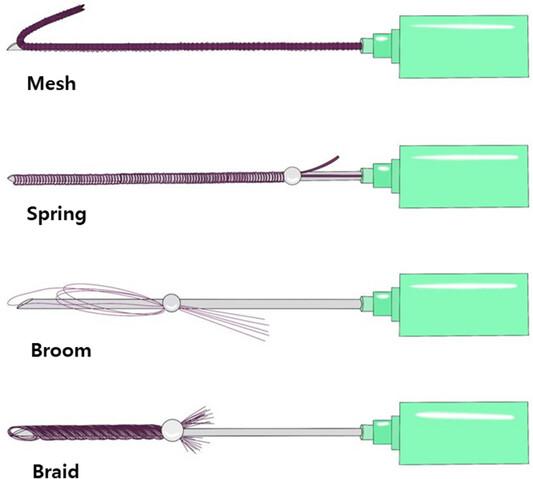
Prices for Filling Threads (thread lift procedures using PDO/PLLA/PCL threads) vary by thread type, number of threads, treatment area, and clinic expertise. Below are typical self-pay ranges per session to help you benchmark Korea against other destinations.
Typical price ranges per session (approximate, 2025):
- South Korea: 800,000–3,000,000 KRW (about USD 600–2,200), depending on thread type and the extent of treatment
- USA: USD 1,500–5,000
- Japan: JPY 150,000–450,000 (about USD 1,000–3,000)
- Singapore: SGD 1,600–4,000 (about USD 1,200–3,000)
- Thailand: THB 25,000–75,000 (about USD 700–2,000)
- Turkey: USD 700–2,000
- UK: GBP 1,400–4,000 (about USD 1,800–5,000)
- Australia: AUD 1,800–4,500 (about USD 1,200–3,000)
How Korea compares:
- Versus USA: Korea is typically lower; many patients see similar treatments in Korea at roughly half to two-thirds the U.S. price.
- Versus Japan: Korea is often slightly lower, especially for higher thread counts.
- Versus Singapore: Korea is generally lower.
- Versus Thailand: Comparable; Thailand can be similar or slightly lower depending on clinic and package.
- Versus Turkey: Comparable overall; Turkey may be slightly lower for some packages.
- Versus UK: Korea is usually lower.
- Versus Australia: Korea is generally lower.
What drives the price difference:
- Thread material and brand (PDO vs. PLLA/PCL; barbed/cog vs. smooth; number of threads)
- Treatment area(s) and complexity (full face vs. midface/jawline/neck only)
- Physician expertise and clinic reputation (senior specialist vs. junior provider)
- Anesthesia/sedation and add‑ons (e.g., combining with filler or neurotoxin)
- City and clinic overhead (Seoul’s Gangnam typically at the higher end)
- Promotions, bundled packages, and currency exchange rates
Tip for accurate quotes:
- Ask clinics to specify thread type, number of threads, areas covered, provider level, and whether follow-up adjustments are included, so you can compare like-for-like across countries.
Alternatives to Filling Threads
1) Hyaluronic Acid Dermal Fillers
Dermal fillers are gel-like injectables used to restore lost volume, refine contours, and soften static lines. In Korea, popular brands include Juvederm, Restylane, and Yvoire.
- How it works: Cross-linked hyaluronic acid attracts water and restores structural support in areas like the cheeks, nasolabial folds, lips, temples, and jawline.
- What it’s best for: Volume loss, contouring (jawline, chin, cheeks), under-eye hollows (with careful technique), and fine-to-moderate lines. Strategic placement can create a “lifted” look without physically lifting tissues.
- Onset and longevity: Immediate improvement; typically lasts 6–18 months depending on product, area, and metabolism.
- Downtime: Minimal; mild swelling or bruising for 2–7 days.
- Advantages: Precise sculpting, reversible with hyaluronidase if needed, customizable. Suitable for patients who want quick, adjustable results.
- Limitations: Does not tighten lax skin or significantly elevate descended tissues; overfilling to simulate a lift can look unnatural.
- Risks: Bruising, swelling, lumps, Tyndall effect (under-eye), and rare but serious vascular occlusion. Choose experienced injectors who use cannulas or meticulous needle technique with aspiration and low-pressure injection.
2) High-Intensity Focused Ultrasound (HIFU: Ulthera, Shurink)
HIFU delivers focused ultrasound energy to precise depths (including the SMAS layer targeted in surgical facelifts) to induce thermal coagulation points that tighten and lift over time. Ulthera and Shurink are widely used in Korea.
- How it works: Heat at targeted depths (dermis/SMAS) triggers collagen remodeling and tissue contraction without breaking the skin.
- What it’s best for: Mild-to-moderate lower-face and jawline laxity, early jowling, brow descent, and submental tightening.
- Onset and longevity: Gradual improvement over 2–3 months; results often last 6–12 months, sometimes longer with maintenance.
- Downtime: Little to none; transient redness, tenderness, or tingling may occur for several days.
- Advantages: Noninvasive tightening with natural-looking lift; complements fillers by addressing skin laxity rather than volume.
- Limitations: Subtle to moderate results; not a replacement for surgical lifting in advanced laxity. Comfort varies by device and settings.
- Risks: Temporary numbness, swelling, or rare nerve irritation that typically resolves; ensure treatment follows proper mapping and energy parameters.
3) Monopolar Radiofrequency Skin Tightening (Thermage FLX)
Thermage uses monopolar radiofrequency to uniformly heat the dermis, causing collagen contraction and neocollagenesis for firmer, smoother skin. Thermage FLX is a common choice in Korean clinics.
- How it works: Bulk dermal heating stimulates collagen remodeling and elastin support, improving laxity and texture.
- What it’s best for: Skin laxity with crepiness, jawline definition, early jowling, periorbital tightening, and overall skin quality.
- Onset and longevity: Some immediate tightening; most improvement appears gradually over 3–6 months and can last 9–18 months.
- Downtime: Minimal; mild redness or swelling for hours to a day.
- Advantages: Single-session, full-face tightening with skin-quality benefits; pairs well with fillers or botulinum toxin for comprehensive rejuvenation.
- Limitations: Less focal “lifting power” than HIFU for SMAS-level tightening; results are modest in advanced laxity.
- Risks: Temporary swelling or tenderness; rare surface irregularities if energy delivery is uneven. Proper coupling, tip selection, and energy settings are essential.
Notes on choosing among alternatives:
- Goal-focused selection: Use fillers for volume/contour, HIFU for subdermal/SMAS tightening and lift, Thermage for global dermal tightening and skin quality.
- Combination planning: Many Korean treatment plans layer modalities (e.g., HIFU or Thermage for tightening plus strategic HA filler for contour) to emulate thread-like lifting with longer-lasting, natural outcomes.
- Suitability and safety: Medical history, skin thickness, degree of laxity, and facial anatomy determine the optimal pathway. Seek a board-certified practitioner for individualized assessment and precise technique.
Conclusion
In summary, filling threads offer a minimally invasive way to stimulate collagen and create subtle lift and contour, and Korea stands out for its skilled providers, technique innovation, and generally competitive pricing—though exact costs vary by clinic, thread material, and treatment scope. Ideal candidates are typically those with early to moderate skin laxity seeking gradual, natural-looking refinement rather than dramatic surgical change, and anyone considering the procedure—especially medical travelers—should prioritize board-certified dermatologists or plastic surgeons, verified clinic credentials, clear discussion of thread type and placement strategy, realistic results, downtime, and aftercare. While filling threads can be a strong option, alternatives such as hyaluronic acid fillers for volume, neuromodulators for dynamic lines, energy-based devices (e.g., ultrasound or radiofrequency) for tightening, and surgical lifting for more advanced laxity may better match certain goals, budgets, and durability preferences. A thorough in-person consultation in Korea can help align expectations, clarify risks and maintenance needs, and determine whether threads or another modality best fits your aesthetic plan.









